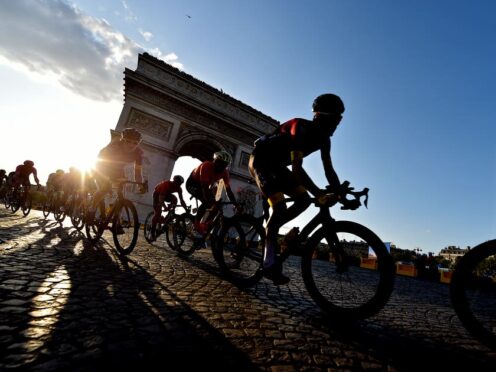The Tour de France is known as a stickler for tradition, but the 111th running will look like no edition to have gone before.
Here, the PA news agency takes a look at the key talking points for what is shaping up to be a unique Tour.
It’s a long way to Paris
It’s a Tour cliche. For at least the first two weeks and usually much of the third, barely a rider interview goes by without them warning “It’s a long way to Paris” as they consider the hurdles still to be overcome. But this year the old saying will be a true in a very different way. For the first time ever the Tour will not finish in the capital, or even visit it. Preparations for the Olympic Games mean the Tour must steer clear and will instead finish just about as far away as possible while still being in France, with a time trial in Nice.
A fight to the end?
Today marks 34 years since Greg LeMond won the 1989 Tour de France by just eight seconds in one of the fiercest battles for the yellow jersey.
Cheers to Greg on a victory that continues to inspire the world to pursue excellence and never stop innovating. #TourdeFrance #TDF pic.twitter.com/XR8KgGWIrO
— LeMond (@lemondbicycles) July 23, 2023
Some love it, some hate it. The traditional procession that has, for decades now, preceded the usual stage 21 sprint finish on the Champs-Elysees divides opinion – with many complaining it is not a real race. But there are no worries about that this year as the shift to the French Riviera prompting a total rethink and a closing time trial that means the battle for yellow is genuinely a 21-stage affair. The last time the Tour finished with a time trial was 1989, and the unforgettable drama of Greg LeMond snatching overall victory away from an ailing Laurent Fignon by just eight seconds.
Giro country
The Tour will break new ground this year with a start in Florence – the first time the race has set off from Italy. Stepping on the toes of the Giro d’Italia, the opening three days will feature several climbs made famous by Italy’s own Grand Tour and also add (yet) another country to the long list to have been visited by the race when the peloton passes through San Marino on stage two.
Cav’s limited opportunities

A year after a crash ended what was due to be his final Tour on stage eight, Mark Cavendish is back for one more shot at a record-breaking 35th stage win. According to the race profile there are eight flat stages but in reality, only five are likely to produce bunch sprints and between them is a parcours which Cavendish – speaking at least year’s route presentation – said left him “in shock” because of how difficult it is. The fast men will have to survive the mountains just to get their somewhat meagre opportunities.
Is it too hard?
🤩 Here it is, the official route of the #TDF2024!
🤩 Voici le parcours officiel du #TDF2024 ! pic.twitter.com/3ORf31AS4T
— Tour de France™ (@LeTour) October 25, 2023
Cavendish was not the only one to raise eyebrows at a route which opens with 3,600 metres of climbing on the very first day and keeps the brutal challenges coming all the way to the very end. The race will be on from the very start with no let up, but that may or may not be a good thing. Designing a course that has every rider on their limit can often suppress attacks, with nobody willing to take risks. Such an approach is anathema to Tadej Pogacar, but it remains to be seen how much his dominant ride at the Giro took out of him.
